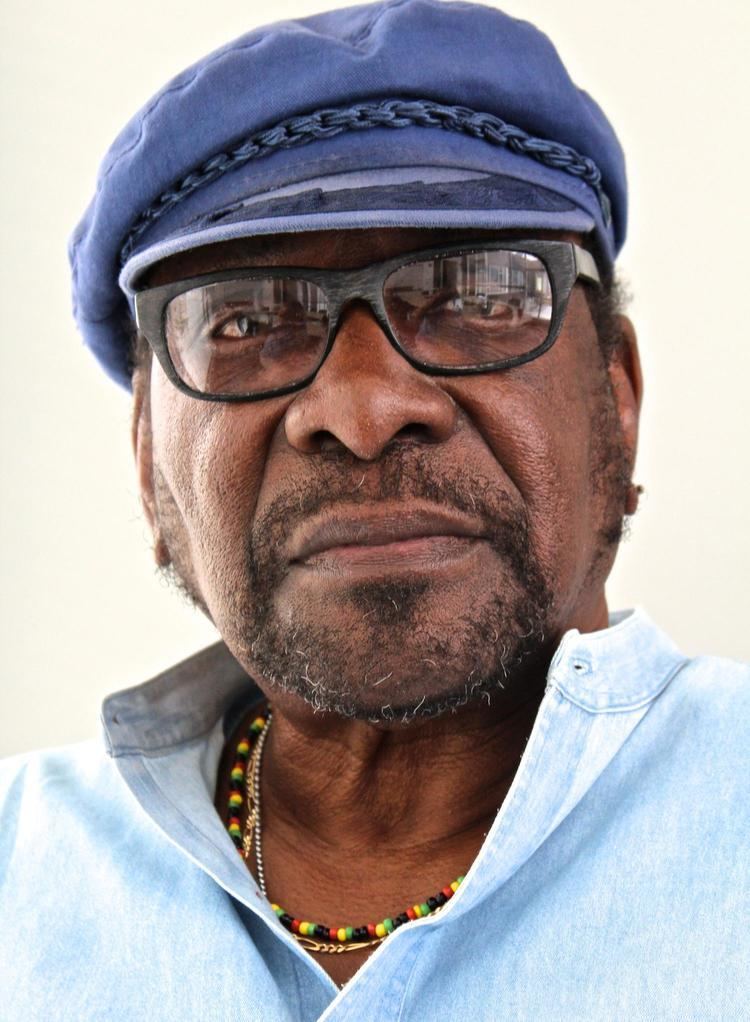 | ||
Percy green ii
Percy Green II, born in the Compton Hill neighborhood of St. Louis, is a social worker and black activist in St. Louis, Missouri. He was active in the St. Louis chapter of the Congress of Racial Equality (CORE), and was a founding member of ACTION (Action Committee to Improve Opportunities for Negroes). He was also the plaintiff in the landmark civil rights case McDonnell Douglas Corp v. Green. Green has fought for equality and Black inclusion in the St. Louis region for nearly half a century. He is a member of the Peace Economy Project's board.
Contents
Percy green part 2
Education
Green was educated at Toussaint L'Ouverture Elementary School, Vashon High School, and Washington University, from which he holds an M.S.W.
Activism
Green has been involved in several landmark actions related to Civil Rights. The most famous of these took place in St. Louis; the first involved the construction of the St. Louis Gateway Arch and the second involved the Veiled Prophet Ball.
On July 14, 1964, Green and Richard Daly, a white college student, scaled the Gateway Arch to protest the exclusion of blacks from federal contracts and jobs related to the construction of the Arch. Green, Daly, and protesters on the ground demanded that MacDonald Construction Company, the contractor responsible for constructing the Arch, raise the number of African Americans employed on the project to 10% within 10 days. Green and Daly were charged with trespassing and other offenses. Today, a photo of hangs inside the Arch in a display commemorating the Arch's history. This incident was one of several that inspired the United States Department of Justice to file the first pattern or practice case against AFL–CIO under Title VII of the Civil Rights Act of 1964. Less than two months after climbing the Arch, Green was laid off by McDonnell Douglas Corporation, where he was employed as a mechanic and laboratory technician. McDonnell Douglas claimed that the layoff was caused by budget constraints, but Green alleged that he was fired because of his race. The case was ultimately decided in Green's favor by the Supreme Court, in a landmark decision that clarified discrimination law by establishing the McDonnell Douglas burden-shifting framework. The fight for equal access to employment opportunities for African Americans characterized much of Green's work with both CORE and ACTION. His activism targeted companies including Wonder Bread, Southwestern Bell, Laclede Gas Company, and Union Electric (now Ameren UE).
Along with other members of ACTION, Green was involved in one of the city of St. Louis's most famous civil rights actions: a protest against the Veiled Prophet Ball. The Veiled Prophet Ball was an annual dance that had been held in December every year since 1878, but was only open to a list of invitees determined by a secret process. The exclusivity of the ball was part of its appeal to St. Louis elite, but also the cause of different protests over many decades. By the 1960s, the ball—from which both Jews and African Americans were prohibited—was the target of Civil Rights protests led by ACTION and others. In December 1972, with the cooperation of several sympathetic debutantes, ACTION infiltrated the Veiled Prophet Ball and unmasked its symbolic head, the mysteriously hooded "Veiled Prophet." Once inside, ACTION member Jane Sauer created a distraction by dropping pamphlets near the stage while fellow member Gina Scott maneuvered behind the "Prophet" and snatched the hood from his head. Multiple witnesses confirmed that the Veiled Prophet was John K. Smith, a Vice President at Monsanto Corporation. "We thought that [the organization] was racist, sexist & elitist," Green later said. "If the city was going to truly integrate, they should not have a Ku Klux Klan-ish event. That’s why we attacked it." ACTION disbanded in 1985.
Green was subsequently hired to direct the minority and women-owned business utilization program. Under the administration of Mayor Freeman Bosley, Jr., Green oversaw the certification process and used that oversight to make sure certifications were not given to "front" businesses (where a women or minority poses as the owner of a business that is actually run by a white man). He was retained in that position by the administration of Mayor by the administration of Mayor Clarence Harmon, but his role was reduced to certification. Green was terminated by incoming Mayor Francis Slay in 2001.
Like many activists of his era, Green was targeted by the government’s Counter Intelligence Program (COINTELPRO), and has often been in conflict with local officials.
Legacy
Over the past half century, Green has inspired countless activists, laborers, professionals, and executives alike to embrace and fight for Civil Rights for all African Americans.
Personal
Green is married to well-known activist and journalist Jamala Rogers, who is originally from Kansas City. Percy Green III, a son from his first marriage, is a firefighter.
